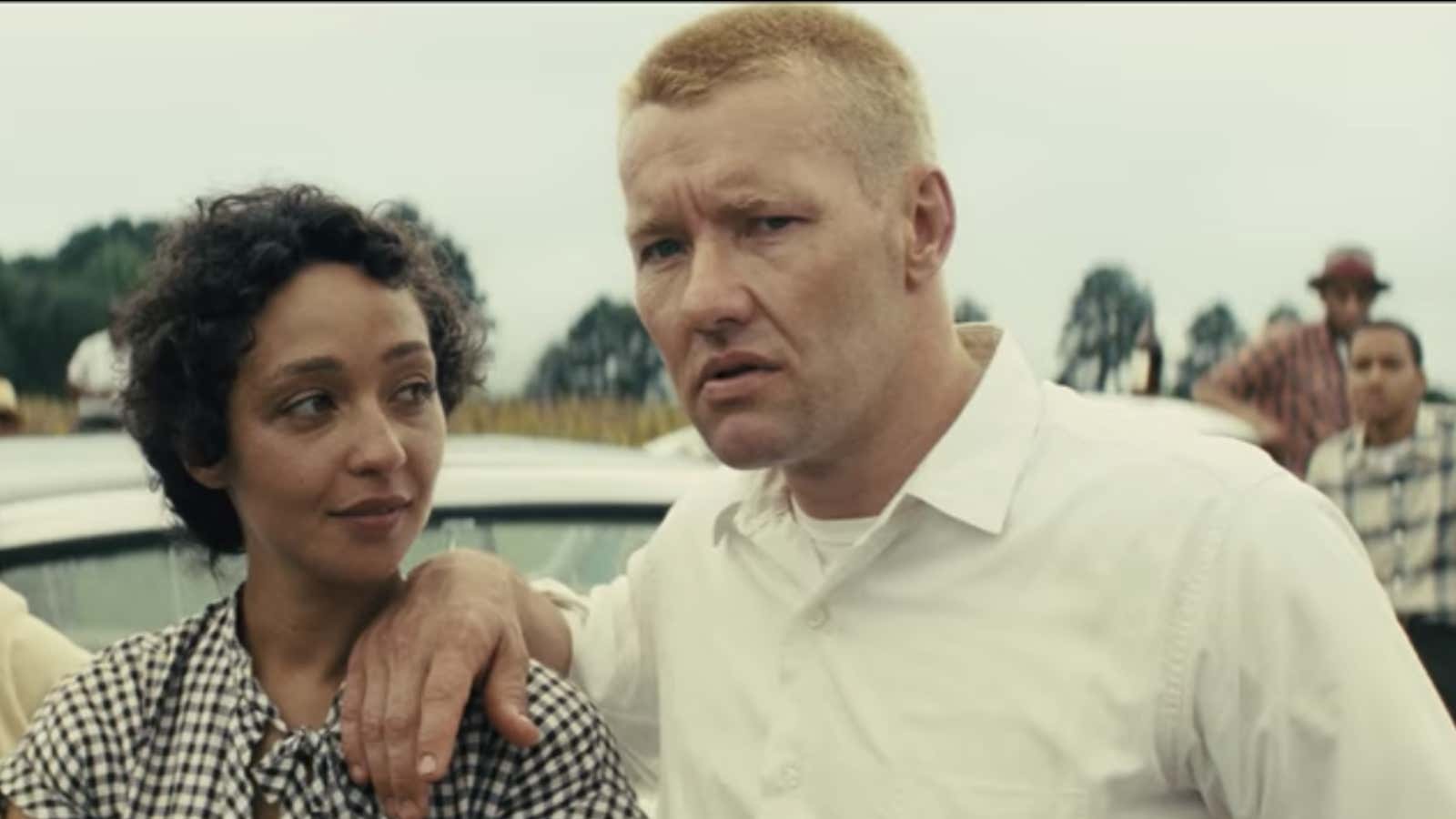The campaign narrative this year has pitted white, working-class rural voters against, well, basically everyone else. Attempting to get “inside the head” of Trump voters, a flood of reporters have trekked to Appalachia or equivalent environs in rural America, reporting back on the authentic anger, and angry authenticity, of the inhabitants. Economic hard times and lack of coastal education has, supposedly, left these simple folk to racial demagoguery. And if these “real Americans” find racism expedient, who are the rest of us to question it?
Just in time for one of the most polarizing elections in recent memory, the new film Loving presents a different view of rural people and their relationship to racism. The film is based on the lives of Mildred (Ruth Negga) and Richard Loving (Joel Edgerton), a real-life couple who were arrested and then banned from Virginia in 1958 for violating the state’s laws against interracial marriage. (Mildred was black and Richard was white.) Their case would progress all the way to the Supreme Court, ultimately setting a new precedent for racial marriage equality in the US.
This sounds like the makings of a Romeo and Juliet tale, with the couple defying their family and community in the name of true love. But the story as presented in Loving is somewhat different. Richard and Mildred are not defying their families—rather, they come from a rural community where integration is common and accepted. Virtually all of Richard’s friends are black; Mildred desperately wants Richard’s white mother, a midwife, to deliver her baby. In a wonderful early scene, Mildred, Richard, and their friends and family are at a party where the black band is playing country folk music—because country folk music is also black music.
By focusing on community, rather than just on Richard and Mildred, the film pushes back against multiple stereotypes. The first of these, and the most obvious, is the vision of working-class whites as bigoted, degenerate racists. Richard, a construction worker, sees blacks as peers, friends, and colleagues. It’s people further up the social ladder—the local sheriff, the judge—who view black people and poor whites with contempt.
In fact, these authority figures look down on poor whites because people like Richard associate with black people and treat them as equals. This is in contrast to narratives like To Kill a Mockingbird, which depicts a noble local elite white man working to protect black people from their white-trash oppressors. Loving presents a world in which poor whites and black people share culture and family—a culture and family under siege by law enforcement and local authorities who bear some resemblance to Atticus Finch.
Loving also pushes back against stereotypical portrayals of African Americans as urban—and therefore dangerous and alienated from “real America.“ Americans have located virtue and authenticity in the country ever since Thomas Jefferson. Black people, who were forced to concentrate in cities because of racist terror, have been associated with urban corruption.
In this movie, though, it’s Mildred more than Richard who finds the city alienating. The couple is forced to move to Washington, DC when the court exiles them from Virginia. Mildred can’t stand it; she’s a pure country girl. She misses her family. She feels like her children are caged in their apartment. For once in Hollywood, the pure country girl—the touchstone of practical virtue and patriotism—is black.
Loving isn’t perfect in every respect. Films are biased towards the concerns of white people (and of men), and this one inevitably, and somewhat helplessly, ends up privileging Richard’s perspective and actions. We see more of his concern about Mildred having to stay in jail, for example, than we see of Mildred in jail. I was also hoping the film would end with Mildred’s magnificent 2007 statement in support of gay marriage. The filmmakers missed a big opportunity by failing to include it.
Still, especially now, Loving seems like a desperately needed corrective to many of America’s most hateful fantasies. Loving insists that black people are Americans: They’re neighbors, friends, and families, not some alien others to be studied and solved. Poor white people may sometimes be racist, just as all people, at some point, betray their own biases and prejudices, but they also have a tradition of integration, tolerance, and solidarity that should be an object lesson, and a resource, for people who fancy themselves better than others.
“I have lived long enough to see big changes,” Mildred Loving wrote in 2007. Hopefully her story, and her husband’s, will continue to inspire more.
